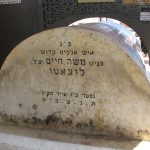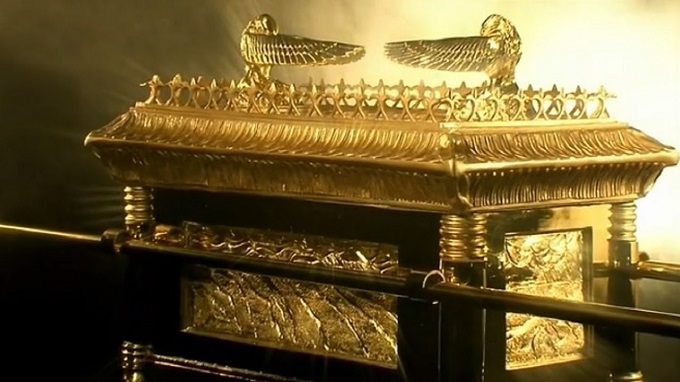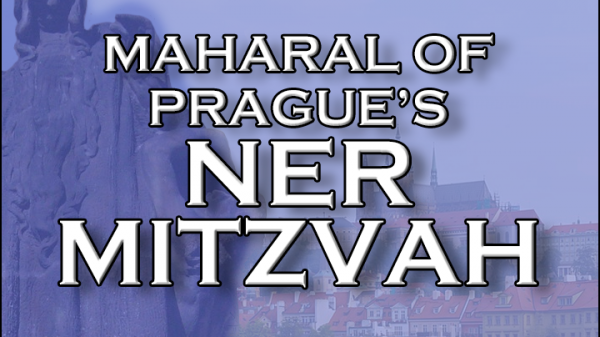Click here to download PDF
Why the Assembly?
Moshe, having just having come back from Heaven with the second Luchos, gathers all the Jewish people and tells them the prohibition to work during Shabbos. Following that he tells them the positive commandment of building the Mishkan as was outlined for him in Heaven in parshos Trumah, Titzavah and Ki-sisa. Why is it stressed that Shabbos was taught to us “B’Hakheil” with a gathering of the whole assembly?
Which come first?
Rashi tells us that he taught them about Shabbos first to teach them the lesson that the construction of the mishkan does not override Shabbos. They must rest on Shabbos, even from constructing the Mishkan. This is very difficult. We do not need Shabbos to be taught to us before the construction of the Mishkan to derive this message. In last week’s Parsha (31:12) after Hashem finished teaching Moshe all the plans for the Mishkan and daily Divine service, the Torah launches into the laws of observing Shabbos. Rashi there say that just the very positioning of Shabbos there, even after the laws of the construction of the mishkan was sufficient to teach the message that the construction the Michigan does not override Shabbos, in contrast to Rashi in this week’s Parsha which puts the stress that Moshe taught Shabbos first to teach us this lesson. How are we to reconcile this contradiction?
Before and After the Egel
There is a major difference in timing between the beginning of last week’s Parsha and this week’s Parsha. In last week’s Parsha Shabbos in the Mishkan are contrasted with each other before the sin of the golden calf, whereas this week’s Parsha is after the sin of the golden calf, where the Jewish people are forgiven and a second chance. What changed between before the sin and after the sin? Prior to the original sin of Adam the “yetzer Hara” – evil inclination was outside of man and embodied in the serpent. After the sin of Adam the evil inclination inside of man, making him fragmented with the good pulling in its direction and the evil pulling in its direction. The Gemara says that the Jewish people at Har Sinai had been purified from the contamination of the sin of Adam. The Nefesh HaChaim understands from Chazal (brought in Rashi in last week’s Parsha) that Satan, on the outside, projected an image of the coffin of Moshe, causing the Jewish people think that he had died. When Satan got them to succumb he was restored inside of Man once again. What is the difference whether you have the yetzer harah on the inside or on the outside? When the yetzer harah is on the outside then man unto himself is a pure Oneness of goodness. All his actions, feelings, and thoughts, are in unison for the common good of serving of Hashem. He just has to withstand being influenced from the outside. However, when the yetzer harah is on the Inside, the yetzer harah can identify as Man’s own desires and thoughts! The battle between good and evil becomes an internal battle of man’s real self-versus his perceived self, and he remains fragmented and lacking any internal unity.
What is ‘Unity’?
Unity is a spiritual reality. When you have the parts or the pieces of a puzzle integrated in their proper order as opposed to when you have them separate and you put them both on the scale they weigh the same. Something integrated and unified does not have any more mass than the sum of its parts. The idea of unity is siphoned off Hashem’s Unity. When things come together, they come together for a purpose. All “purpose” is derived from the ultimate purpose of serving Hashem. As the Mishna in Avos says: “any assembly that is for the sake of Heaven will endure”. Unity is actually the emergence of a Divine power! Just like Hashem is one, the particles of creation can all come together in a unified system for the purpose of serving, “for the sake of Heaven”.
Unity & Goodness
This is why Unity is only to be found amongst the good. The Tower of Bavel, which was a unifying cause, actually led to further dispersal and disconnection. As the same Mishna that we quoted above ends off: “any assembly that’s not for the sake of Heaven will not endure”. Similarly, in Pharaoh’s dreams in parshas Miketz we find that the seven good stalks came out of the same stem and the seven good cows were grazing together. By the seven bad cows and the seven bad stalks there is no mention of being “one” or “together”. As the pasuk says (Tehillim 92:10): “all evil-doers separate”. Unity results from the coming together of “good particles”. “Goodness” that is the ‘glue’ that holds things together, to unite for a greater goal then what could be achieved as separate entities. The ‘nation’ could accomplish much greater things than the individual and the nation must come together for that higher goal. This is the secret of why the Jewish people called “One Nation”. Our national Unity is for the sake of the Torah, which is for the sake of serving Hashem. As Rav saadiah Gaon said: “our nation is only a nation through its Torah”. True Unity is only to be found in the Jewish Nation. We have a unique Unity amongst us that actually overcomes the fact that we are divided into different tribes and dispersed around the globe. Just like a nation, all the particles of reality unite to serve Hashem in way greater way than the purpose they served on their own. The integrated Cosmos spells out a sanctification of Hashem’s Name which would remain hidden if each particle remains onto its own. What if things are infected with evil? It is the “goodness” that is the ‘glue’ through which everything comes together to spell out the “Name of Heaven”. When things are tainted with evil, there is ‘static’ blocking the cosmic Unity, as evil tends to pull in its own selfish direction.
39 vs 40
“Good parts” vs the “whole” that spells out the “Name of Heaven” is the difference between “39” and”40”. The Torah says that a sinner should get ‘40 Lashes’, however, Chazal have taught us the tradition of Torah she’baal peh that it’s only 39 lashes. If so, why did the Torah say 40? We find something very similar by Shabbos. There are 39 melachos that went into the creation of Heaven and Earth. Originally the Shechina was meant to be in the midst of the Jewish people, literally. After being tainted by the sin of the golden calf the Shechina cannot be literally in the Jewish people, it has to be contained in the sterile space of the Mishkan. The building of the Mishkan was the creation of a ‘compact World’ of pure space untainted by the sin of the golden calf. The Mishkan is representative of every force in creation and the building of the Mishkan is the integration of all the forces of reality. Hence, we derive from the Mishkan all the melachos involved in the creation of heaven and earth. The Mishna in maseches Shabbos (chap 7) says: “the [prohibited] Melachos of Shabbos are 40 minus 1”. Why does the Mishna speak in such a convoluted way? Why couldn’t it just say that it there are 39 forms of prohibited work? “40” represents the emergence of a system. A system is not just the sum of the parts it’s the parts arranged in an integrated way. An example of a system is the human form. Chazal tell us it takes 40 days for the fetus to attain a human form. On the 40th day is the emergence of the form. This is why by no coincidence Moshe had to get the Torah in course of 40 days in heaven. The Torah gives us a new form. The Torah has 613 Commandments, 248 positive ones parallel to our Limbs and 365 negative ones parallel to our sinews. The form emerges on the 40th day.
Lashes
The sinner has tainted his form. He has to get lashes, but only 39. “39” is parallel to the tainted Parts. After the parts have been purified by the lashes, the “40th” is actually his new form that was disrupted by his corrupted parts. He only needs 39 lashes to get rid of the impurity in his separated Parts, as the impurity caused blockage between the parts of his persona. After that blockage has been removed by the lashes, the “40th” is his new reborn form.
Shabbos vs the week
This is the relationship between Shabbos and the days of the week. Shabbos is the whole and the days of the week are the parts of that whole. As we say in our daily Shir Shel Yom: “first day of Shabbos”, “second day of Shabbos” etc. until the 7th day which is called Shabbos per se. the days of the week are the parts, Shabbos is the whole. During the days of the week we are working on the parts. Come Shabbos it says: “vayechulu hashomayim v’ha’aretz”- Heaven and Earth are completed/integrated. Shabbos adds unity to the six days of the week. Shabbos is the unifying factor that closes the system. As the Zohar (II: 135) says: “Shabbos is the secret of one like Hashem is One and His Name is One”. This explains the secret of why carrying in the public domain is prohibited, we must only be in the “Domain of One”. The actions that are to be done during the days of the week are indeed “40 minus 1”. “39” are the individual parts lacking unity, Shabbos itself is the “40th” – the unity that holds everything together. This is alluded to in the words of the Mishna “40 minus 1” as in 40 minus oneness – the unity which is the Shabbos itself.
Plan A
Prior to the sin of the golden calf, when the Jews had successfully gotten out of the impurity from the sin of Adam, their internal world was a world of pure goodness. It was possible for them to do pure actions and those pure actions would combine with each other so that at the end a whole integrated mishkan would emerge. The complete unified Mishkan would “spell out” the Divine presence perfectly parallel to the Divine Presence that spreads over the world on Shabbos. The completion of the Mishkan is parallel to Shabbos, when all the parts are in place. Even prior to the completion of the Mishkan, when Shabbos appears Construction must cease. You don’t deal in pieces when the whole is revealed! The idea was to add up the “good particles” to “spell out the Divine revelation” that can only be seen in the whole Mishkan. The construction of the Mishkan is first, Shabbos second. We’re building up by combining the “good parts” into the “whole” that spells out Divine revelation.
Plan B
However, after the sin of the golden calf, we are conflicted and tainted. Just like there is fragmentation inside of us, there’s fragmentation in everything that we do. We can’t do anything with 100% pure intentions because our whole persona is tainted with evil. We have ulterior motives even in the good things that we do. In such a situation where we and our actions are tainted, wat will be the ‘glue’ to hold the pieces together? The only answer to this is to reveal the power of the whole ahead of time and that will be the ‘glue’ that will hold the pieces together and then the whole will be revealed again on a permanent basis when the pieces are together. This is the secret behind Moshe gathering and assembling the whole people and taught them about Shabbos before teaching them about the Construction of the Mishkan. Moshe is giving them a way to pull off this project of the cosmic Unity that is created by constructing the Mishkan, by revealing the power of the whole ahead of time. That’s what it means “he assembled klal Yisroel and taught them about Shabbos”. Shabbos will give us the power to elevate the week that follows it, so that week will have an element of “wholeness” that will allow the pieces to come together. Thus, the second Shabbos at the end of the week will have a solid base to be revealed on. With this we can understand the secret of the Chazal: “If the Jews would only keep two Shabbosos they would be redeemed”. Why two Shabbosos? We need the first Shabbos to give sanctity and the potential for Unity for the week that follows, and thus the second Shabbos will be the real Shabbos because it has a healthy base to be manifested upon.
Tum’ah vs Taharah
Parshas Parah talks about getting out of “tum’ah” – impurity. When I first met my sainted Rebbe HaGaon HaRav Moshe Shapira ZT”L the very first thing he taught me is the difference between Purity and impurity. The Hebrew word for impurity is “Tum’ah”. The root of the word is “Tam” which means ‘sealed’ or ‘covered over’. Impurity is when things are sealed off from each other. That’s why the impure may not come to the Beit HaMikdash – they are sealed off from sanctity. In some instance they are sealed off from society and are sealed off from marital relations. “Tum’ah” is when the ‘part’ is sealed off onto its own. Purity is openness! The Hebrew word for purity is “Taharah”. The window that Noach made to the ark, “Tzohar” – the Targum translates as “Tiharah” as in Purity. Purity is openness, like a window, with nothing sealed off. Purity is in the simple togetherness. In simplicity there is no individuality and hence no separateness.
Parah Aduma & Shabbos Parah
In para aduma there’s two purifying factors. The first one is water which is common to all forms of Purity. Water is not ‘individual’. Water has no shape. No color, no taste, and there is no singular form for water in Hebrew! It is a generality, not a particular, and that’s why all forms of Purity come with water. Water brings things back to the “whole” and negates individuality and separateness. The second is the burning of the red heifer, which also is a negation of the individual and separateness. The separate entity is reduced to ash and combined with the water representing bringing the separate and the individual back into the collective. The greatest separation is death. Body and soul that were meant to be together. The sin of Adam that brought fragmentation made this separation which lead into this isolation. Para aduma is brings Purity as it is overcome of separateness and fragmentation and bringing things back to one. Shabbos also overcomes the separateness and the fragmentation of our Deeds during the six days of the week. Shabbos Parah is to have the combined power of these great forces.
Good Shabbos.











